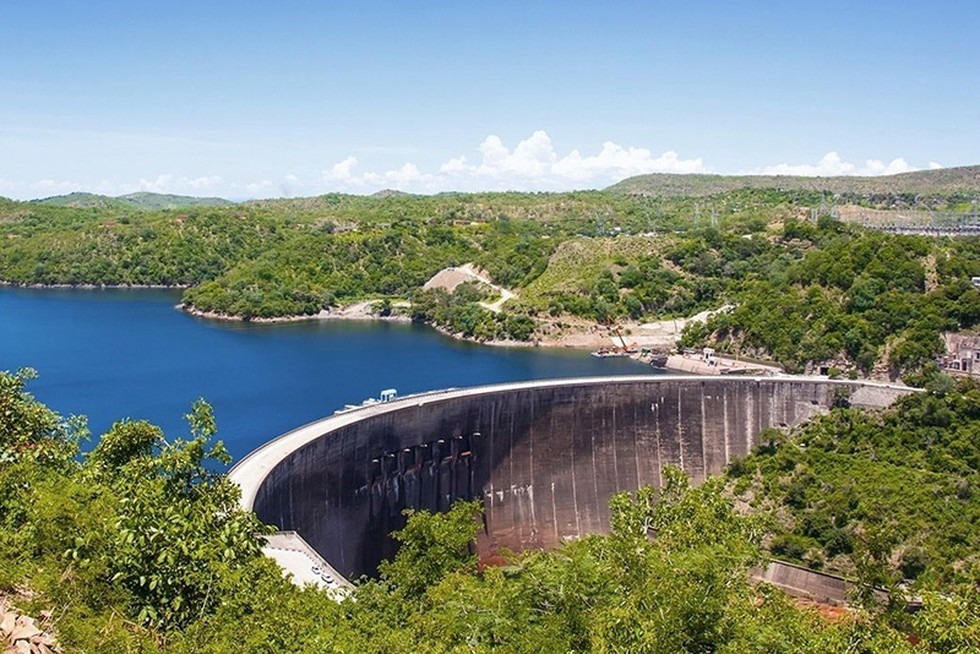Lake Kariba, the world’s largest human-made reservoir, faces an alarming crisis due to extreme drought conditions that have drastically lowered its water levels. This is raising concerns that the Kariba Dam, a key power source for Zambia and Zimbabwe, may face an unprecedented shutdown, marking the first time in its 65-year history.
Drought and Power Shortages in Southern Africa
The crisis began earlier this year when a severe El Niño event triggered the worst dry spell in southern Africa in a century. This prolonged drought has led to drastic water rationing, with authorities restricting the flow of water through the Kariba Dam. The result has been power outages of up to 21 hours a day in Zambia and 17 hours in Zimbabwe, devastating local economies.
Impact on Zambia and Zimbabwe
Both Zambia and Zimbabwe have been grappling with weak economies: Zambia is recovering from a debt restructuring, while Zimbabwe suffers from chronic inflation. The power cuts have exacerbated these challenges, particularly for small businesses and industries dependent on a steady power supply.
In Zambia, Cephas Museba, the manager of the hydropower plant at Kariba, highlighted the severity of the situation by showing the exposed concrete beams and brown rocks where the reservoir should be.
“The worst it’s ever been,” Museba said, referencing the historically low water levels that threaten the future of the dam.
Historical Significance of Kariba Dam
Constructed between 1955 and 1959 during British colonial rule, the Kariba Dam was officially opened in 1960 by Queen Elizabeth the Queen Mother. The creation of Lake Kariba led to the displacement of over 57,000 people and required the rescue of 6,000 large animals, an effort called “Operation Noah.”
The dam is critical to both countries’ power generation, with Zimbabwe’s power station providing 38% and Zambia’s 33% of their respective national capacities. However, due to the current water shortage, only a limited number of turbines are operating, putting further strain on the power supply.
Ripple Effects of the Drought
The drought’s impact extends beyond power shortages, with widespread crop failures and food shortages affecting southern Africa. Countries like Zambia, Zimbabwe, and Lesotho have declared a national disaster, and neighboring Angola and Mozambique are also feeling the effects.
In Zimbabwe, businesses like small metalworking enterprises are struggling to stay afloat without a regular electricity supply, with owners like Handsome Maurukira spending hundreds of dollars a month on diesel generators just to keep operations going.
Fishing Industry Struggles
Lake Kariba’s fishing industry has also been hard hit, with fishers reporting severe declines in catches. Previously, they could catch a tonne of fish each night; now, they are lucky to fill a single crate.
Peter Mashonga, a boat captain on the Zimbabwe side of the lake, noted the worsening situation, stating that the lake’s water levels are lower than they have ever been, surpassing even the drops seen during the 1996 drought.
Economic Outlook
The economic impact of the ongoing crisis is substantial. Zimbabwe’s economic growth is forecast to slump to 2% in 2024 from 5.3% in 2023. Meanwhile, the International Monetary Fund has lowered Zambia’s growth forecast from 2.3% to 1.2%.
Government Response and Future Prospects
In response to the ongoing power crisis, governments in both countries are focusing on diversifying their energy sources. New coal and solar plants are under construction, and Zambia is exploring the potential for hydroelectric power from rivers in its wetter north-western regions.
Jito Kayumba, an adviser to Zambia’s president, acknowledged the need for energy security and stated that, while Zambia is committed to increasing its renewable energy capacity, coal will still play a role in the country’s energy mix due to its abundant supply.
A Glimmer of Hope: Forecast for Rain
Despite the grim situation, there is some hope on the horizon. The rainy season in Zambia typically begins in November and extends through April, and experts are predicting that this year’s rains will be normal. If early rains arrive as expected, they could provide some relief and help restore water levels at Kariba Dam, though it is uncertain if it will be enough to avoid further power cuts.
Cephas Museba expressed cautious optimism, stating that if the rains come early, it could make a significant difference.
Multiple-Choice Questions (MCQs):
- What is the main cause of the current crisis at Lake Kariba?
- A) Increased fishing activity
- B) Severe drought due to El Niño
- C) Overfishing in the lake
- D) Excessive water usage by neighboring countries
- Answer: B) Severe drought due to El Niño
- What year was the Kariba Dam completed?
- A) 1945
- B) 1960
- C) 1959
- D) 1965
- Answer: B) 1960
- Which two countries are primarily affected by the power shortages from Kariba Dam?
- A) Kenya and Uganda
- B) Zambia and Zimbabwe
- C) Malawi and Mozambique
- D) Namibia and South Africa
- Answer: B) Zambia and Zimbabwe
- What percentage of Zimbabwe’s total power generation capacity does the Kariba Dam’s power station account for?
- A) 38%
- B) 50%
- C) 25%
- D) 20%
- Answer: A) 38%
- What alternative energy sources are Zambia and Zimbabwe developing in response to the crisis?
- A) Nuclear power plants
- B) Coal and solar energy
- C) Wind power
- D) Geothermal energy
- Answer: B) Coal and solar energy
- Which sector in Zimbabwe has been severely impacted by power shortages?
- A) Education
- B) Fishing
- C) Manufacturing
- D) Agriculture
- Answer: C) Manufacturing
- What is the predicted economic growth rate for Zimbabwe in 2024?
- A) 3%
- B) 5.3%
- C) 2%
- D) 6%
- Answer: C) 2%
